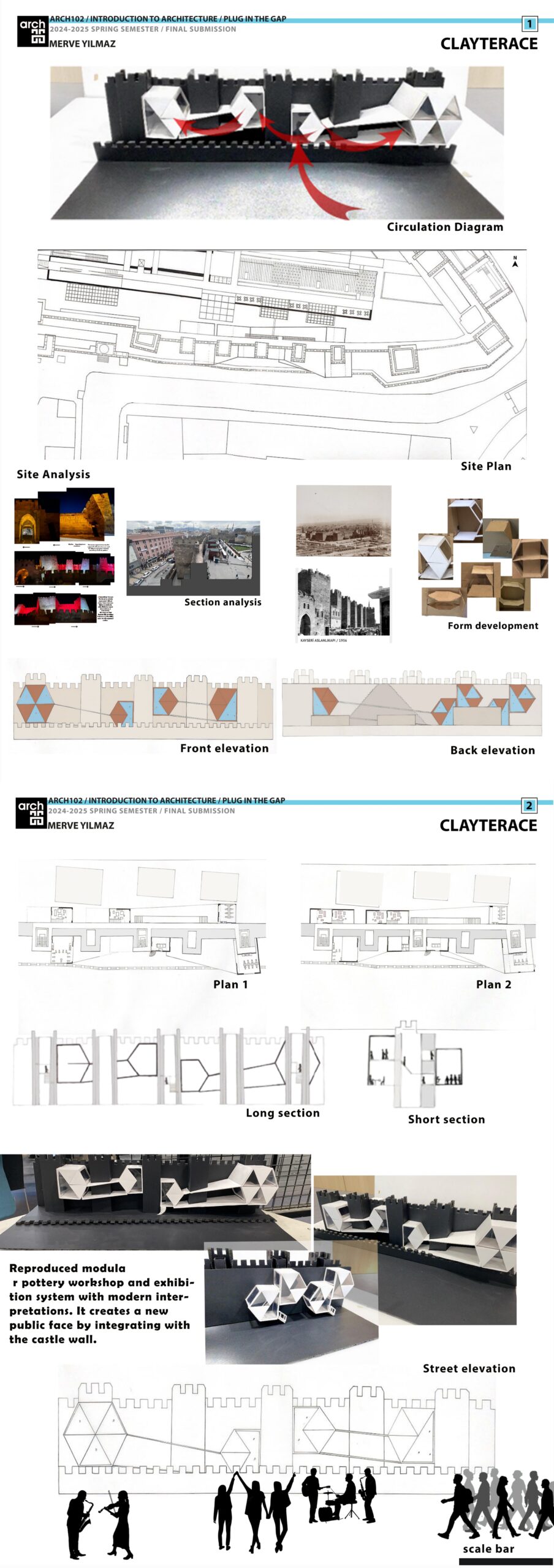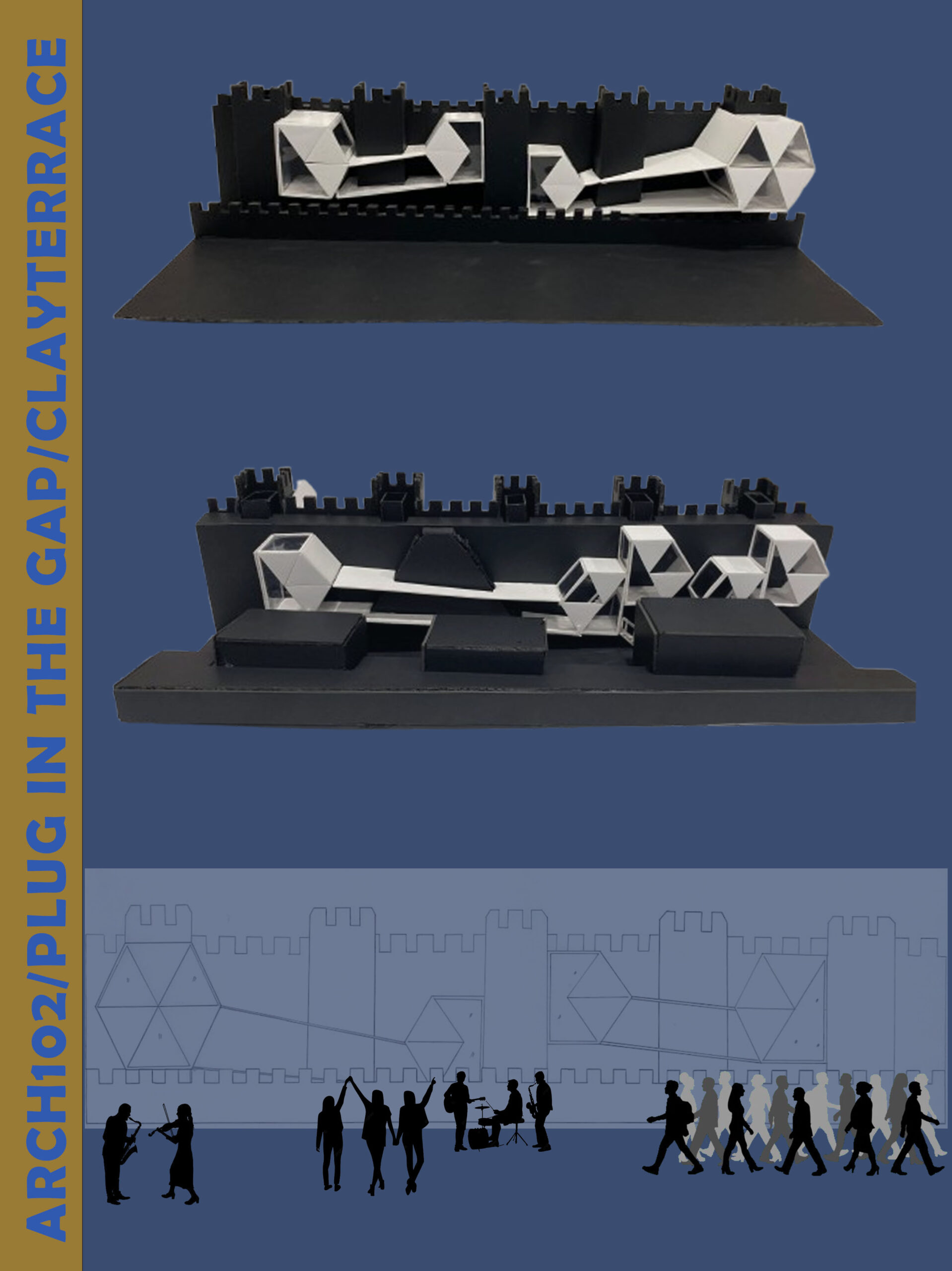CLAY TERRACE / Merve Yılmaz
The project titled “Clay Terrace” is a modular system designed to be integrated into the southern walls of the Kayseri Castle, following the theme of Art and Craft. The core idea of the design is rooted in pottery, a traditional craft that holds cultural significance in the region. Pottery was chosen as the main theme because it aligns well with the Art and Craft concept while offering functional and cultural continuity. This approach aims to introduce a contemporary layer of use without damaging the historical integrity of the castle.
The design process began with the use of incomplete hexagonal forms, which were developed into unique modules. These modules were integrated into the castle walls through a “plug-in” system, creating a seamless yet independent structural language. By connecting these modules with rectangular corridors, a sense of volumetric continuity was achieved, allowing new circulation paths to emerge both within and between the inner and outer sections of the castle. Positioned at varying levels, these modules added spatial depth and dimension to the rigid verticality of the wall.
The outer castle modules accommodate waiting areas and both modern and traditional workshops, while the inner castle provides more secluded functions, including exhibition spaces and a pottery studio that offers a quiet, detached environment from the urban surroundings. This spatial arrangement allows for both communal and individual use, creating a balance between public engagement and isolated creation spaces. The semi-open areas visible from the outside also contribute to the dynamic and eye-catching nature of the structure.
By fragmenting and reinterpreting the hexagonal form, the project successfully achieves a strong balance between open and enclosed spaces. This not only enhances visual interest but also improves functionality. “Clay Terrace” stands as a striking design proposal that bridges historical architecture with contemporary craft production spaces. Resembling a modern “covered terrace” attached to the ancient walls, the project demonstrates a thoughtful and innovative approach both aesthetically and architecturally 




